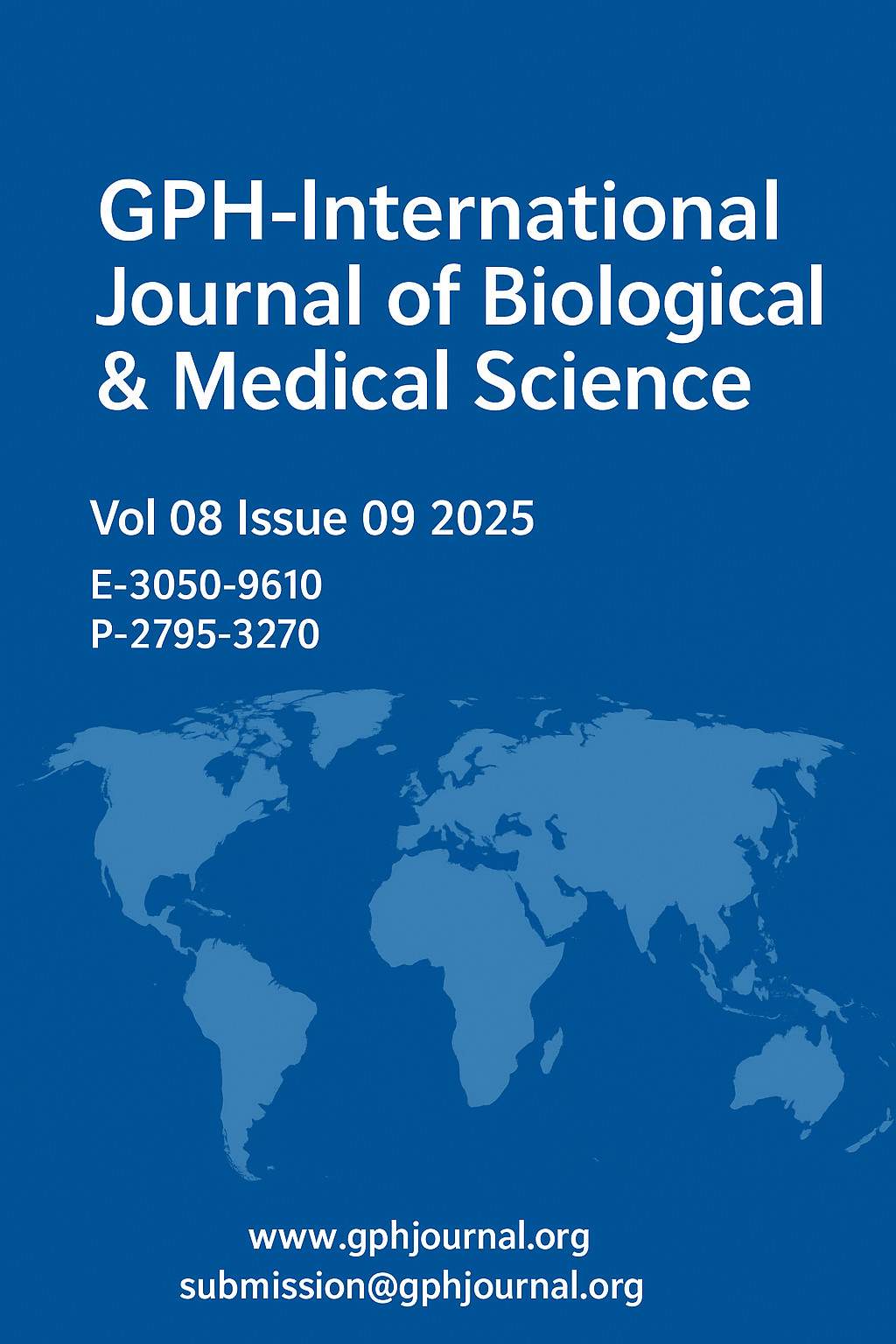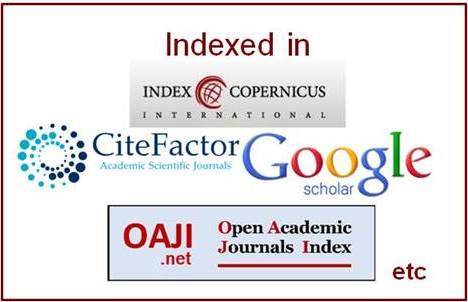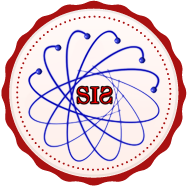Comparative Analysis of Morphological and Histological Differences between Right and Left Human Kidneys
Abstract
Background: The right and left human kidneys are both bilateral organs, but they don't always have the same structure and histology. These kinds of differences can have an impact on how the kidneys work, how surgery is done, and how a diagnosis is made. Researchers in Western countries have looked into these kinds of differences a lot, but not so much in South Asia, especially Bangladesh. It is important to know about these changes in structure and histology because chronic kidney disease (CKD) is becoming more common in the area. Objective: The goal of this study was to look at the differences in shape and structure between the right and left human kidneys in different age groups using cadaver samples from Bangladesh.
Method and Material: We used purposive sampling to get 100 kidneys (50 right and 50 left) from unclaimed bodies at Dhaka Medical College and did a descriptive cross-sectional study on them. We put the kidneys in 10% formalin and split them into four age groups: 10 to 19 years, 20 to 39 years, 40 to 59 years, and 60 years or older. The goal of this study is to look at the differences in shape and structure between the right and left human kidneys in different age groups, using cadaveric samples from Bangladesh. We did a descriptive cross-sectional study on 100 kidneys (50 right and 50 left) that we got from unclaimed bodies at Dhaka Medical College through purposive sampling. The kidneys were kept in 10% formalin and split into four age groups: 10 to 19 years, 20 to 39 years, 40 to 59 years, and 60 years or older.The concern was taken by all sample. Results: The results of this study could help us learn more about how kidneys age and what that might mean for medical practice. We used microscopy and staining methods to look at morphometric features (weight, length, width, thickness, and volume) and histological features (the number and size of glomeruli per mm²). We looked at the data with ANOVA and unpaired t-tests. Results: The 20–39 age group had the biggest kidneys and the most glomeruli. The number of glomeruli went down a lot as people got older, but their size went up, which could be a sign of compensatory hypertrophy. The left kidney was always bigger than the right in terms of weight, length, and volume. There were statistically significant changes in structure between the right and left kidneys and between age groups. These results show how important it is for the kidneys to be on the same side and how they change shape as we get older. Conclusion: This study shows that the right and left kidneys have very different structures and histologies, and that they get worse with age, especially after age 60. The results give South Asia some important baseline information and show how important it is for nephrologists, surgeons, and transplant surgeons to know about the area's anatomy. In the future, researchers should use molecular imaging and spatial profiling to learn more about the functional implications.
Downloads
References
Maurya H, Kumar T, Kumar S. Anatomical and physiological similarities of kidney in different experimental animals used for basic studies. J Clin Exp Nephrol. 2018;3(09).
Fabian Alejandro G, Luis Ernesto B, Hernando Yesid E. Morphological characterization of the renal arteries in the pig. Comparative analysis with the human. International Journal of Morphology. 2017 Mar 1;35(1).
Rajab JM, Abbood AS, Mohsin RA. Comparative histological study of the kidneys in two types of mammals. Pharma. Innov. J. 2024;13(11):86-91.
Mansour MM, Badran Shoeib MM, Mohamed Morsi SE, El-Sayed Yousse GA, El-Sayed MA. Comparative Analysis of Hematopoietic Stem Cells in the Head and Trunk Kidneys of Common Carp (Cyprinus carpio) Using Histology, Immunohistochemistry, and Flow Cytometry. Egyptian Journal of Veterinary Sciences. 2025 Jul 15:1-1.
Jayapandian CP, Chen Y, Janowczyk AR, Palmer MB, Cassol CA, Sekulic M, Hodgin JB, Zee J, Hewitt SM, O’Toole J, Toro P. Development and evaluation of deep learning–based segmentation of histologic structures in the kidney cortex with multiple histologic stains. Kidney international. 2021 Jan 1;99(1):86-101.
Lindström NO, McMahon JA, Guo J, Tran T, Guo Q, Rutledge E, Parvez RK, Saribekyan G, Schuler RE, Liao C, Kim AD. Conserved and divergent features of human and mouse kidney organogenesis. Journal of the American Society of Nephrology. 2018 Mar 1;29(3):785-805.
Cases C, García-Zoghby L, Manzorro P, Valderrama-Canales FJ, Muñoz M, Vidal M, Simón C, Sanudo JR, McHanwell S, Arrazola J. Anatomical variations of the renal arteries: cadaveric and radiologic study, review of the literature, and proposal of a new classification of clinical interest. Annals of Anatomy-Anatomischer Anzeiger. 2017 May 1;211:61-8.
Bertog S, Fischel TA, Vega F, Ghazarossian V, Pathak A, Vaskelyte L, Kent D, Sievert H, Ladich E, Yahagi K, Virmani R. Randomised, blinded and controlled comparative study of chemical and radiofrequency-based renal denervation in a porcine model. EuroIntervention. 2017 Feb 1;12(15):e1898-906.
Stan FG. Comparative Study of the Liver Anatomy in the Rat, Rabbit, Guinea Pig and Chinchilla. Bulletin of the University of Agricultural Sciences & Veterinary Medicine Cluj-Napoca. Veterinary Medicine. 2018 Jan 1;75(1).
Treuting PM, Dintzis SM, Montine KS, editors. Comparative anatomy and histology: a mouse, rat, and human atlas. Academic Press; 2017 Aug 29.
Perdiki M, Datseri G, Liapis G, Chondros N, Anastasiou I, Tzardi M, Delladetsima JK, Drakos E. Anastomosing hemangioma: report of two renal cases and analysis of the literature. Diagnostic Pathology. 2017 Jan 24;12(1):14.
Hermsen M, de Bel T, Den Boer M, Steenbergen EJ, Kers J, Florquin S, Roelofs JJ, Stegall MD, Alexander MP, Smith BH, Smeets B. Deep learning–based histopathologic assessment of kidney tissue. Journal of the American Society of Nephrology. 2019 Oct 1;30(10):1968-79.
Lawlor KT, Vanslambrouck JM, Higgins JW, Chambon A, Bishard K, Arndt D, Er PX, Wilson SB, Howden SE, Tan KS, Li F. Cellular extrusion bioprinting improves kidney organoid reproducibility and conformation. Nature materials. 2021 Feb;20(2):260-71.
Zhao S, Todorov MI, Cai R, Ai-Maskari R, Steinke H, Kemter E, Mai H, Rong Z, Warmer M, Stanic K, Schoppe O. Cellular and molecular probing of intact human organs. Cell. 2020 Feb 20;180(4):796-812.
Liang X, Zhang J, Wang Y, Wu Y, Liu H, Feng W, Si Z, Sun R, Hao Z, Guo H, Li X. Comparative study of microvascular structural changes in the gestational diabetic placenta. Diabetes & vascular disease research. 2023 May 15;20(3):14791641231173627.
Altini N, Cascarano GD, Brunetti A, Marino F, Rocchetti MT, Matino S, Venere U, Rossini M, Pesce F, Gesualdo L, Bevilacqua V. Semantic segmentation framework for glomeruli detection and classification in kidney histological sections. Electronics. 2020 Mar 19;9(3):503.
Ali BH, Al‐Salam S, Al Suleimani Y, Al Kalbani J, Al Bahlani S, Ashique M, Manoj P, Al Dhahli B, Al Abri N, Naser HT, Yasin J. Curcumin ameliorates kidney function and oxidative stress in experimental chronic kidney disease. Basic & Clinical Pharmacology & Toxicology. 2018 Jan;122(1):65-73.
Tretiakova MS. Eosinophilic solid and cystic renal cell carcinoma mimicking epithelioid angiomyolipoma: series of 4 primary tumors and 2 metastases. Human pathology. 2018 Oct 1;80:65-75.
Fereidouni F, Harmany ZT, Tian M, Todd A, Kintner JA, McPherson JD, Borowsky AD, Bishop J, Lechpammer M, Demos SG, Levenson R. Microscopy with ultraviolet surface excitation for rapid slide-free histology. Nature biomedical engineering. 2017 Dec;1(12):957-66.
Abedini A, Levinsohn J, Klötzer KA, Dumoulin B, Ma Z, Frederick J, Dhillon P, Balzer MS, Shrestha R, Liu H, Vitale S. Single-cell multi-omic and spatial profiling of human kidneys implicates the fibrotic microenvironment in kidney disease progression. Nature genetics. 2024 Aug;56(8):1712-24.
Jespersen NZ, Feizi A, Andersen ES, Heywood S, Hattel HB, Daugaard S, Peijs L, Bagi P, Feldt-Rasmussen B, Schultz HS, Hansen NS. Heterogeneity in the perirenal region of humans suggests presence of dormant brown adipose tissue that contains brown fat precursor cells. Molecular Metabolism. 2019 Jun 1;24:30-43.
Bábíčková J, Klinkhammer BM, Buhl EM, Djudjaj S, Hoss M, Heymann F, Tacke F, Floege J, Becker JU, Boor P. Regardless of etiology, progressive renal disease causes ultrastructural and functional alterations of peritubular capillaries. Kidney international. 2017 Jan 1;91(1):70-85.
Author(s) and co-author(s) jointly and severally represent and warrant that the Article is original with the author(s) and does not infringe any copyright or violate any other right of any third parties, and that the Article has not been published elsewhere. Author(s) agree to the terms that the GPH Journal will have the full right to remove the published article on any misconduct found in the published article.























